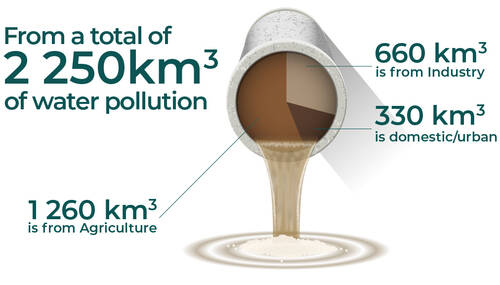- Urban areas occupied less than 0.5 percent of the Earth’s land surface in 2000. However, the rapid growth of cities (in 2014, 54 percent of the world’s population were urban dwellers) has had a significant impact on land and water resources, encroaching on good agricultural land. A land-suitability assessment is needed to guide new areas for urbanization.
- Some 33 percent of the world's soil is moderately to highly degraded.
- Soil erosion carries away 20–37 billion tonnes of topsoil annually, reducing crop yields and the soil’s ability to store and cycle carbon, nutrients and water. Annual cereal production losses due to erosion are estimated to be 7.6 million tonnes.
- Globally, agriculture accounts for 72 percent of all surface and groundwater withdrawals, mainly for irrigation.
- The SDG indicator 6.4.2 on global water stress increased from 17 percent in 2017 to 18 percent in 2018, with significant regional differences.
- Inland fish capture totalled 11.9 million tonnes in 2019, representing 13 percent of the total global capture fisheries’ production. Just 17 countries produced 80 percent of the total global fish catch. Asia has the highest inland fish catch, representing 66 percent of the total global fish catch.






